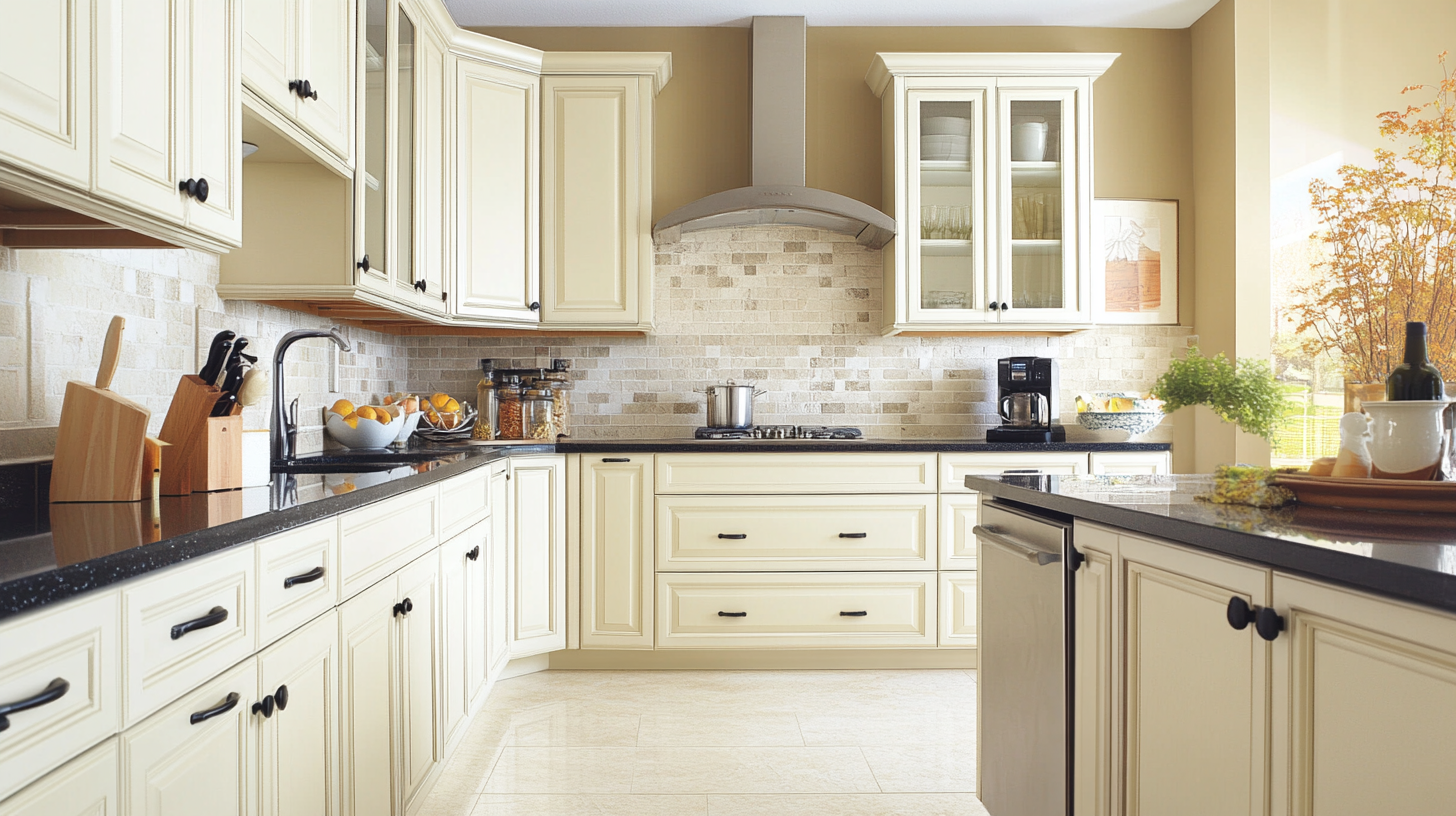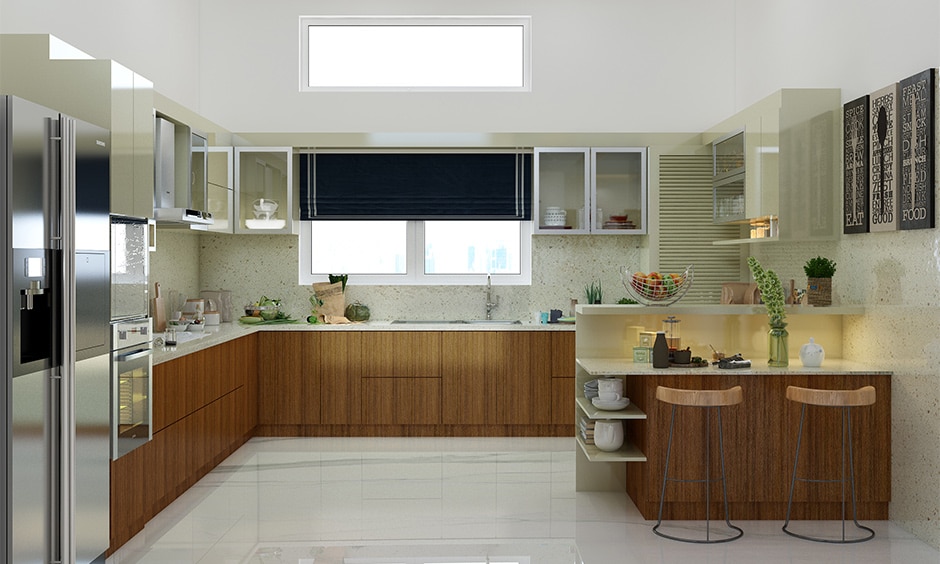Kitchen Sink Guides: The Ultimate Guide to Finding the Best Sink for Your Home Renovation
When it comes to home renovation, choosing the right kitchen sink is a crucial decision that can significantly impact your kitchen’s functionality and aesthetics.
Would you prefer the classic look of a single bowl sink? Or would you benefit from a double bowl sink, known for its functionality and versatility, allowing you to separate tasks like washing and rinsing, catering to various kitchen needs?
This comprehensive guide will walk you through everything you need to consider when selecting a kitchen sink, from materials and sizes to styles and mounting options.
Why Choosing the Right Kitchen Sink Matters
The kitchen sink is the hardest-working feature in your kitchen, serving as a focal point for meal prep, dishwashing, and even entertaining.
A well-chosen sink bowl, with the right depth, can significantly impact usability, complement your style, boost efficiency, and stand the test of time.
Kitchen Sink Materials
Your choice of sink material will impact durability, maintenance, and overall aesthetics. Here are the most popular options:
Stainless Steel
Most common due to versatility, durability, and affordability, a stainless steel sink is also known for its practical aspects and easy maintenance.
- Resistant to rust and stains
- Easy to clean
- Best for modern or minimalist kitchens
- Opt for 18-gauge or lower for added durability
Granite Composite
- Durable and stylish
- Made from crushed granite and acrylic resins
- Scratch-resistant and heat-resistant
- Available in various colors
- Perfect for balancing function and fashion
Fireclay
- Known for durability and smooth finish
- Classic option, often found in farmhouse-style kitchens
- Resistant to stains and scratches
- Maintains glossy look over time
- Can be more expensive
Cast Iron with Enamel Coating
- Offers a classic, timeless aesthetic
- Incredibly durable and easy to maintain
- Can be heavy
- More prone to chipping or cracking if not cared for properly
Copper
- Provides a rustic or traditional look
- Naturally antimicrobial
- Requires regular upkeep to prevent patina build-up
Porcelain
- Offers a classic, glossy finish
- Available in various colors
- Can be prone to chipping and scratching
Solid Surface
- Made from acrylic or polyester resins
- Seamless integration with countertops
- Easy to repair if damaged
- Limited color options
Kitchen Sink Sizes
Choosing the right size is crucial for both functionality and aesthetics. Pick a size that complements your kitchen’s design and balances the space with your needs.
Consider the sink depth as it impacts not only the amount of space available for dishes and larger items but also the overall kitchen layout and accessibility.
A smaller kitchen may benefit from a workstation sink that can maximize space by serving as a wash and prep station. Larger kitchens can accommodate more spacious sinks to handle large pots, pans, and greater kitchen traffic.
Single Bowl Sinks
- Ideal for smaller kitchens or minimalist aesthetics
- Perfect for those who prefer one large basin for all tasks
Double Bowl Sinks
- Suitable for frequent dishwashing or separate food prep areas
- Various configurations available (equal-sized bowls or one larger and one smaller)
- Offer convenience but can take up more counter space
Customer feedback on the Elkay double sink highlights its ease of installation and design features, such as deep dimensions and the double-bowl layout.
Triple Bowl Sinks
- Excellent for larger kitchens
- Common in commercial kitchens
- Allow for efficient separation of washing, rinsing, and food prep tasks
Bar Sinks
- Smaller, secondary sinks often used in kitchen islands or wet bars
- Provide additional convenience for food prep or entertaining
Mounting Styles
The mounting style affects both aesthetics and functionality:
Undermount Sinks
- Installed underneath the countertop
- Provide a sleek, seamless look
- Easy to clean
- Perfect for granite, marble, and quartz countertops
Top-Mount (Drop-In) Sinks
- Rest on top of the counter with a visible lip
- Easier to install
- Great for traditional or budget-friendly kitchen remodels
Farmhouse Sinks
- Also known as apron-front sinks
- Have a distinctive front that protrudes from the cabinetry
- Offer a rustic, traditional feel
- Popular in large kitchens or vintage-inspired aesthetics
Integrated Sinks
- Made from the same material as the countertop
- Provide a seamless, modern look
- Can be more expensive and difficult to replace
Sink Accessories and Features
Consider these additional features to enhance functionality:
Installation Considerations
Measuring and Installing a Kitchen Sink
Installing a kitchen sink is a task that requires precision and careful planning. Here’s a step-by-step guide to help you through the process:
- Measure the Sink Area: Start by measuring the length, width, and depth of the area where the sink will be installed. Accurate measurements are crucial to ensure that your new kitchen sink fits perfectly into the designated space.
- Choose the Right Installation Method: Depending on your sink type and countertop material, decide on the installation method. Whether you opt for an undermount sink, a drop-in sink, or a farmhouse sink, each method has its own set of requirements and benefits.
- Prepare the Countertop: Before installing the sink, make sure your countertop is level and secure. This might involve making adjustments or reinforcing the countertop to support the weight of the sink, especially if you’re installing a heavy cast iron or farmhouse sink.
- Install the Sink: Follow the manufacturer’s instructions carefully when installing the sink. Ensure that it is properly aligned and securely fastened to the countertop. This step is crucial for preventing leaks and ensuring the longevity of your kitchen sink.
- Connect the Plumbing: Once the sink is in place, connect the water supply lines and drain pipes. Make sure all connections are tight and secure, then test for leaks by running water through the sink. Address any leaks immediately to avoid water damage.
By following these steps, you can ensure a smooth and successful kitchen sink installation, enhancing both the functionality and aesthetics of your kitchen. Looking for more installation guidance? Check out this guide.
Kitchen Sink Accessories
Enhancing your kitchen sink with the right accessories can significantly improve its functionality and convenience. Here are some popular kitchen sink accessories to consider:
- Faucets: Choose from a variety of faucet styles and finishes to complement your sink and kitchen decor. Options include pull-down, pull-out, and touchless faucets, each offering unique features to suit your needs.
- Soap Dispensers: Installing a soap dispenser near your sink provides easy access to hand soap or dish soap, keeping your countertop clutter-free and making cleaning tasks more efficient.
- Sink Strainers: A sink strainer is essential for catching food particles and debris, preventing clogs in your drain. They are easy to clean and can help maintain the longevity of your plumbing system.
- Sink Grids: Protect the bottom of your sink from scratches and damage with a sink grid. These grids provide a flat surface for washing dishes and can also help prevent breakage of delicate items.
- Drying Racks: A drying rack that fits over your sink can be a game-changer for drying dishes and utensils. It keeps your countertop organized and allows water to drain directly into the sink, reducing mess.
By incorporating these accessories, you can create a more efficient and enjoyable kitchen workspace.
Integrated Drainboards
- Make drying dishes easier
- Helpful in homes with limited counter space
Soundproofing
- Reduces noise of water hitting the sink
- Especially valuable in stainless steel models
Built-in Dispensers
- Soap dispensers or instant hot water dispensers add convenience
- Some models offer integrated garbage disposals or pull-out faucets
Sink Grids
- Protect the sink bottom from scratches
- Provide a flat surface for washing dishes
Cutting Boards
- Custom-fit boards that sit on top of the sink
- Increase usable workspace
Troubleshooting Common Kitchen Sink Problems
Even the best kitchen sinks can encounter issues from time to time. Here are some common problems and practical solutions to keep your sink in top condition:
- Leaks: If you notice water leaking from your faucet or drain connections, check for loose or damaged parts. Tighten any loose connections and replace worn-out components to stop the leak.
- Clogs: A clogged sink can be a major inconvenience. Use a plunger or a drain snake to clear the blockage. For persistent clogs, consider using a drain maintenance product to keep your pipes clear.
- Stains: Regular cleaning is key to preventing stains on your sink surface. Use a gentle cleanser and a soft cloth to remove stubborn stains without damaging the sink material.
- Noise: If your sink is making unusual noises, it could be due to loose or damaged parts. Check the faucet and drain connections, and tighten or replace any components as needed to reduce noise.
- Water Temperature: If the water temperature is not to your liking, check the setting on your water heater. Adjusting the temperature can ensure that you have comfortable water for washing dishes and other tasks.
By addressing these common issues promptly, you can maintain a well-functioning and efficient kitchen sink, ensuring it serves you well for years to come.
Price Considerations
Kitchen sinks can range from budget-friendly to high-end luxury:
- Average cost: $100 to over $1,000
- Installation fees: Typically $200 to $500
- Consider long-term value when investing in a high-quality sink
Top Kitchen Sink Brands to Consider
When shopping for a kitchen sink, consider these top-rated brands:
Kohler
- Known for premium materials and innovative designs
Moen
- Offers a wide range of affordable, high-quality sinks
Blanco
- Specializes in granite composite and stainless-steel sinks
Franke
- Popular for both residential and commercial kitchens
Ruvati
- Known for high-quality stainless steel and fireclay sinks
- Offers innovative designs and features
- Provides excellent value for money
Kraus
- Offers a wide range of affordable, stylish sinks
Elkay
- Known for durable stainless-steel sinks
- Offers a variety of mounting options
Final Tips for Choosing the Best Kitchen Sink
- Consider your workflow and daily kitchen habits
- Match the sink to your kitchen’s overall aesthetic
- Plan for long-term use and durability
- Pay attention to warranty details and care instructions
- Consider the sink’s impact on resale value
- Think about water conservation features
- Evaluate the sink’s compatibility with your chosen faucet
- Consider the depth of the sink for comfort and practicality
Choosing the best kitchen sink is more than just a functional decision — it’s about creating a space that works for you and enhances your home’s design.
With so many options available, take the time to carefully consider your material preferences, mounting style, size, and budget.
Armed with the information in this guide, you’re well on your way to finding the perfect kitchen sink to complete your home renovation. Looking for design inspiration? Check out these fabulous kitchen rebuilds!
By making a thoughtful decision now, you’ll enjoy a sink that’s not only beautiful and functional but also a lasting feature in your kitchen for years to come.







